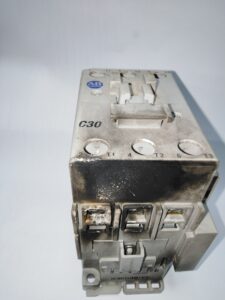Table of Contents
what is overcurrent?
Overcurrent is an electrical condition where the current flowing through a circuit exceeds its designed capacity or rating.
It can occur due to a variety of reasons, such as short circuits, excessive loads, or equipment failures. Overcurrent can damage electrical equipment, create fire hazards, and compromise safety.
Types of Overcurrent
-
Overload Current:
- Happens when a circuit carries more current than it is designed for over an extended period.
- Example: Plugging in too many high-power devices into one outlet.
-
Short-Circuit Current:
- Occurs when there is a direct connection between the phase (hot) and neutral (or ground) conductors, bypassing the load.
- Results in a massive surge of current due to very low resistance.
-
Ground Fault Current:
- A specific type of short circuit where the current unintentionally flows to the ground.
- Commonly occurs due to damaged insulation or faulty equipment.
Consequences of Overcurrent

- Overheating of conductors and equipment.
- Degradation of insulation materials.
- Potential fire hazards.
- Equipment failures or complete breakdowns.
What causes overcurrent in a circuit?
1. Overloading
This occurs when a circuit or equipment is subjected to a current beyond its rated capacity for an extended period.- Causes:
- Plugging in too many devices into a single outlet or power strip.
- Operating high-power equipment (e.g., heaters, air conditioners) on circuits not designed to handle such loads.
- Faulty design or improper sizing of the conductors or breakers in the circuit.
2. Short Circuits
- Causes:
- Damaged insulation exposing live wires.
- Loose connections causing conductors to touch.
- Conductors coming into contact with water or conductive materials.
3. Ground Faults
Ground faults occur when current unintentionally flows directly to the ground, often due to damaged equipment or faulty wiring.- Causes:
- Cracked or degraded insulation.
- Moisture or contaminants entering electrical enclosures.
- Faulty grounding systems.
4. Equipment Failures
Faulty equipment can cause a sudden spike in current or even lead to a short circuit.- Causes:
- Worn-out motors, transformers, or other electrical components.
- Malfunctioning devices, such as improperly wired appliances.
- Failure of protective devices (e.g., circuit breakers not tripping as they should).
Sometimes, external factors unrelated to the internal circuit design can lead to overcurrent.
- Causes:
- Lightning strikes inducing high current surges.
- Power surges from the grid.
- Accidental contact with high-voltage lines.
Protection Against Overcurrent
Fuses: Melt and disconnect the circuit when current exceeds a specific threshold.
Circuit Breakers: Automatically trip to interrupt the circuit during overcurrent conditions.
Overcurrent Relays: Used in industrial and power system applications to detect and isolate faults.
Fuses
A fuse is a simple device designed to protect circuits by disconnecting the power when current exceeds a predefined limit.
How It Works:
- A fuse contains a thin metal wire or strip that melts when the current is too high.
- The melting of the wire breaks the circuit, stopping the flow of electricity.
Key Features:
- Single-use: Once a fuse blows (melts), it must be replaced.
- Fast operation: Responds quickly to overcurrent to protect equipment and wiring.
- Different types: Available for various applications, such as cartridge fuses for home use or high-voltage fuses for industrial setups.
Example:
If you plug a high-power heater into a circuit rated for smaller loads, the excessive current will cause the fuse to blow, preventing overheating and fire.
Circuit Breakers
A circuit breaker is an automatic switch that interrupts the current when it detects an overcurrent condition. Unlike fuses, circuit breakers can be reset after tripping.
How It Works:
- Circuit breakers use either thermal, magnetic, or electromechanical mechanisms to sense overcurrent.
- Thermal breakers: Use a bimetallic strip that bends under heat from high current, triggering the trip mechanism.
- Magnetic breakers: Use an electromagnetic field generated by high current to activate the trip.
- Combined mechanisms: Many circuit breakers use both thermal and magnetic features for better protection.
- When tripped, the breaker disconnects the circuit by opening internal contacts.
Key Features:
- Reusable: Can be reset manually or automatically after tripping.
- Adjustable settings: In industrial applications, breakers can be set to specific current thresholds.
- Wide range: Available for low-voltage household circuits and high-voltage industrial systems.
Example:
If an air conditioner motor malfunctions and draws excessive current, the circuit breaker will trip to protect the wiring and prevent damage.
Overcurrent Relays
An overcurrent relay is a protective device primarily used in industrial power systems and electrical grids. It monitors current levels and sends a signal to disconnect the circuit during faults.
How It Works:
- Relays continuously monitor the current flowing through a circuit.
- If the current exceeds a preset value (threshold), the relay triggers a circuit breaker or other isolation device to disconnect the affected circuit.
- Modern relays use advanced microprocessor-based technology, allowing for precise control, settings, and integration with automation systems.
Key Features:
- High precision: Can differentiate between normal high currents (e.g., during motor startup) and dangerous overcurrent.
- Flexible operation: Includes time-delay settings to avoid unnecessary trips for short-duration surges.
- Used in coordination: Often works with other protection devices in large systems.
Example:
In a power substation, if a transformer draws excessive current due to a fault, the overcurrent relay will isolate the transformer by tripping its associated circuit breaker, preventing widespread damage.
How can I tell if my electrical panel is overloaded?
If your panel main circuit breaker trips, and when you turn it on again it works for a while and then trips again, it’s a clear sign of a possible overloaded panel.
But, keep in mind that there are other reasons for circuit breaker tripping, you can hire an electrician to measure the currents of the panel, check the man circuit breaker rating, and make sure it’s overloaded.
If you know how to use a current clamp, you can measure the current by it, check the circuit breaker rating, and make sure the CB rating is greater than the measured one.
Make sure to switch on all loads during the measuring process, this is the only way to have a clear idea about the panel load.
One more thing, an electrical engineer can calculate the panel loads, check the circuit breaker’s ratings, and make sure it’s not overloaded.
It’s crucial to watch out for clues that your electrical panel could be generating an excessively high level of electricity when you start putting in more and more appliances for any reason.
To assist you in recognizing when this could be happening, we’ve listed a few telling indications.
Panel Overheating, the overheating that might result from excessive current flowing through your breakers or cables is also a sign of an overloaded panel.
In my workplace, we use thermal imaging to check that panels are not overloaded.
Check out my comprehensive article Avoiding Overcurrent Situations.
Is current protection and surge protection the same?
No, current protection and surge protection are not the same, although they both safeguard electrical systems. They address different issues and operate in distinct ways. Here’s a detailed comparison:
Current Protection
Definition: Protects electrical systems from excessive current, such as overcurrent, which can occur due to overloads or short circuits.
Key Features:
- Purpose: Prevent damage caused by sustained high current that exceeds the system’s rated capacity.
- Devices Used:
- Fuses: Melt to disconnect the circuit.
- Circuit Breakers: Automatically trip to isolate the fault.
- Overcurrent Relays: Detect overcurrent in industrial and large-scale systems.
- Response Time: Designed to react quickly to overcurrent conditions to prevent overheating, insulation damage, or fire hazards.
- Common Scenarios:
- Overloading a power strip with multiple devices.
- Short circuit in a motor or wiring.
Analogy:
Think of current protection as preventing a “flood” by stopping excessive flow in a pipe before it bursts.
Surge Protection
Definition: Protects electrical systems from sudden voltage spikes or surges that last for a very short duration, usually a few microseconds to milliseconds.
Key Features:
- Purpose: Shield sensitive equipment from voltage surges caused by external or internal factors.
- Devices Used:
- Surge Protection Devices (SPDs): Divert excess voltage to the ground.
- Metal Oxide Varistors (MOVs): Absorb high voltage spikes.
- Transient Voltage Suppression (TVS) diodes: Used in sensitive electronics.
- Response Time: Operates almost instantaneously (nanoseconds to microseconds) to handle transient events.
- Common Scenarios:
- Lightning strikes causing voltage surges on power lines.
- Switching large loads like motors, which create transient spikes.
- Power grid fluctuations.
Analogy:
Think of surge protection as an “umbrella” that shields you from sudden heavy rain (voltage spikes).
Key Differences Between Current Protection and Surge Protection
| Aspect | Current Protection | Surge Protection |
|---|---|---|
| Protects Against | Overcurrent (overload and short circuits) | Voltage spikes (transient overvoltage) |
| Cause | Sustained high current | Sudden, short-duration voltage increase |
| Devices Used | Fuses, Circuit Breakers, Relays | SPDs, MOVs, TVS Diodes |
| Response Time | Milliseconds | Nanoseconds to Microseconds |
| Common Scenarios | Overloaded circuits, short circuits | Lightning, power surges, switching transients |
| Impact on Equipment | Overheating, insulation failure, fire risk | Damage to sensitive electronics, component failure |
Complementary Use
In practical systems, current protection and surge protection often work together:
- Current protection prevents sustained overcurrent issues.
- Surge protection handles sudden transient spikes that can damage sensitive equipment, like computers and TVs.
Can over-current damage a circuit breaker?
Yes, overcurrent can potentially damage a circuit breaker, but circuit breakers are designed to withstand and interrupt overcurrent conditions within their specified ratings.
However, there are limits to their capacity, and extreme overcurrent events or sustained overloads can lead to damage or failure.
Here are some considerations regarding overcurrent and circuit breaker damage:
To prevent damage to circuit breakers and ensure their reliable operation, it’s important to adhere to the following practices:
- Select circuit breakers with appropriate current ratings for the circuits they protect.
- Avoid overloading circuits beyond their designed capacity.
- Properly maintain and inspect circuit breakers to identify signs of wear or damage.
- Replace damaged or malfunctioning circuit breakers promptly.
- Ensure that circuit breakers are operated within their specified voltage and current ranges.
While circuit breakers are designed to provide overcurrent protection and are more robust than fuses, they are not immune to damage under extreme or improper operating conditions.
Regular maintenance and adherence to electrical safety standards are essential to maintain the integrity and reliability of circuit breakers in electrical systems.
For more information about Why circuit breakers go bad, read my article.
Don’t Leave Empty-Handed!
Install my Free Android App on Google Play:
Electrical Cables Most Common Tables “Cables Tables”
And, my Electrical Calculations App “Fast Electrical Calculator”
Discover more great content by subscribing to My channel
Looking to stay ahead of the game in the world of electrical engineering? Subscribe to my YouTube channel and gain access to exclusive content you won’t find anywhere else!
The staff I recommend
(Amazon Affiliate Links to products I believe are high quality):
- Economy 120 Volt/60Hz AC Power Source – Step-Down Voltage & Frequency Converters 1800W
- UNI-T Digital Multimeter Tester UT139C
- 50-Amp Extension Cord for RV “100ft”
- Voltage Stabilizer 110/220v
- Hair Dryer “best selling“
- TOSHIBA EM131A5C-BS Countertop Microwave Ovens
Disclaimer: This contains affiliate links to Amazon products. I may earn a commission for purchases made through these links.



